Phil Harris is the clock curator at the Black Country Living Museum in Dudley (www.bclm.co.uk), which in clock terms, is pretty high kudos. Ive been chatting to Phil via email for maybe a year or more and we often exchange comments on articles and suchlike. Hes really good, and like me, appreciates the antiquity of clocks as much as the engineering.
Ive always said if you want to get into history and you need a thread to follow, clocks make an excellent job of pulling everything together because they are both engineering and interior and exterior design based objects. If you know what a 16th century clock looks like you are pretty close to being able to identify a lot of 16th century furniture or other antique items because design fashion runs in layers through the production of all household goods, rather like the strata you see in geology; different colours and textures in each sequential layer.
Although phil doesnt repair clocks commercially like me and my associates, he does a museum quality rebuild on the clocks given to his care. That is the top of the game. If you can produce museum quality work you are among the best.
Without people like Phil the world would not be the wonderfully interesting place that it is, and Phil is a testament to what can be achieved if you take time and care over a projects over years and years. A rare breed.
Because he repairs the clocks at a museum the detail is incredibly important, anything less than perfect would be a misrepresentation of our history.
I think Phil thoroughly deserves to be Braintree Clock Repairs first Guest blogger and I can completely endorse him, his work and the people he gives his time to. Brilliant. Anyway, over the Phil…
Hi, I’m Phil Harris and I’ve been following Justin’s fascinating blogs for some time. I am not a professional clock repairer like Justin; I’m a retired Chartered Engineer but merely a self-taught amateur horologist, and I look after the clocks at a local Museum as a volunteer. In correspondence with Justin, I mentioned my interest in 400-day clocks, and Justin very kindly agreed [I begged him – hes brilliant – Justin] that I could write a blog about these intriguing clocks.
The 400-day or “Anniversary Clock” is a decorative mechanical clock, often covered by a clear glass or acrylic dome, which employs a very slow-turning torsion pendulum. Together with a powerful mainspring and extra arbors in the gear train, which give an overall gear ratio of around 30,000-to-1, these clocks are designed to run for a whole year between windings, hence the name… you wind it up just once a year, on an important anniversary. In contrast, conventional mechanical clocks are usually designed to run for 8 or 14 days.
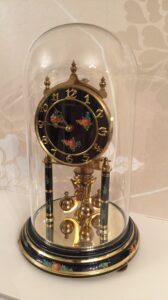
However, such long running – roughly fifty times longer than a conventional 8-day clock – doesn’t come easy. The entire movement is a precision mechanism which needs to be in absolutely pristine condition. The pendulum ‘ticks’ just once every few seconds. Any dirt, old sticky oil or maladjustment is likely to stop the clock. The most delicate part is the thin vertical suspension spring which carries the rotating pendulum bob, and being a mere couple of thousandths of an inch thick, suspensions easily get broken. Fortunately replacements are available, but somewhat awkward to fit unless you have the right tools, dexterity and patience. But, by all means, order a new suspension spring and replace the broken one.
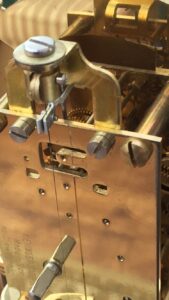
Sadly, things aren’t always quite that simple. There are about 25 different thicknesses of suspension spring; which one does your clock need? how long should it be? Luckily this information is again readily available, but you’ll need to buy a book – the excellent ‘Horolovar 400-day Clock Repair Guide’ – or ask someone who has a copy, in order to find what you need. And once you’ve fitted the new suspension spring, the likelihood is that the clock won’t run for more than 15 minutes. If you’re lucky, this will be because the suspension simply needs to be put ‘in beat’ which can perhaps take several hours of making tiny adjustments to the upper support block. If you’re unlucky – as seems to happen with four out of every five clocks that I encounter – some other fault is present, and the clock will have to be dismantled and repaired.
Anniversary clocks come in three sizes, standard, miniature and midget, in decreasing order of size and increasing level of difficulty. Many standard-sized clocks are older and more valuable, whereas the miniatures and midgets became increasingly popular from the 1950s onwards and are more likely to appear on the second-hand market. Made mainly in Germany up to the late 1970s, few spare parts are available nowadays other than suspension springs, blocks and forks, main springs and glass or plastic domes. So, what are the likely problems you could encounter?
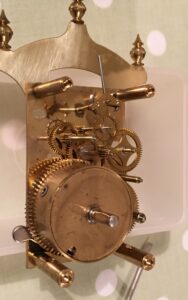
I have repaired clocks where a breaking main spring or ratchet wheel has released enough energy to bend a solid steel arbor or gear shaft, and bend or break gearwheel teeth clean off. My most recent clock had been dismantled and reassembled incorrectly by a previous owner, who had bent one of the tiny pin pallets in the process. This had to be replaced, using a 0.3mm diameter piece of hardened and tempered steel wire.
I have also encountered clocks with bent centre shafts – the tiniest amount of inaccuracy here will add enough friction to the motion work that drives the hands to prevent the clock from running – so every component must be cleaned, preferably using clock cleaning fluid in an ultrasonic bath, then carefully inspected under magnification.
The small pivots at the end of each arbor, together with their matching pivot holes in the plates, must be highly polished in order to reduce friction to the absolute minimum. The closer you look at these small parts, the more you notice the surface roughness of gear and pinion teeth, which often need to be polished away. And the mainspring always needs to be removed, cleaned and lubricated and refitted, or occasionally replaced, a job that definitely requires the right tools. Once all this is done, the gear train can be assembled between the plates and tested for free movement.
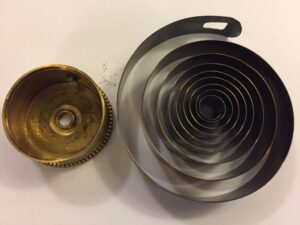
The escapement – the key part of the movement which drives and regulates the swing of the pendulum – comes in two types, Graham dead-beat and pin-pallet, and both have their own nuances and quirks. Sadly it is common to find that some previous owner or ‘repairer’ has twiddled one or all of the possible adjustments in a failed attempt to get the clock to run, when all it really needed was a good clean and service. Many then end up for sale on eBay… Adjusting a 400-day clock escapement can take many hours of further work making tiny changes, then reassembling and testing, and finally adjusted for good timekeeping before the clock can be considered reliable.
Personally, I wouldn’t advise anyone to tackle a 400-day as their first clock to repair. I had restored around 60 ‘conventional’ clocks before I took on my first 400-day clock, and I soon realised how much I still had to learn! 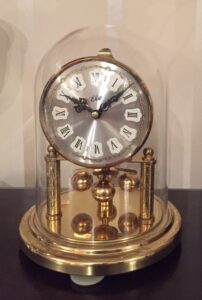
A lot of 400-day clocks were given as presents or wedding gifts and often have a sentimental value far in excess of their monetary worth, but these clocks are generally well-made and when properly cared-for and serviced, can carry on working literally for generations. Because so much work is involved, however, many professional clock repairers nowadays simply refuse to accept 400-day clocks for servicing or repair. Fortunately, though, Justin at Braintree Clock Repairs still takes these beautiful clocks on, at very reasonable prices, and gives a guarantee on all his work. Why not give him a call?
Phil Harris CEng FCIBSE MIEE
[Thanks for you kind words Phil, but more importantly thanks for sharing your excellent experience and knowledge. I have deep respect for any man who knows the overall gear ratio of a 400 day clock to be 30,000 to 1. I did not know this but it is now burnt into my memory by the shame of being “out-knowledged”. Thanks again old chap – Justin]

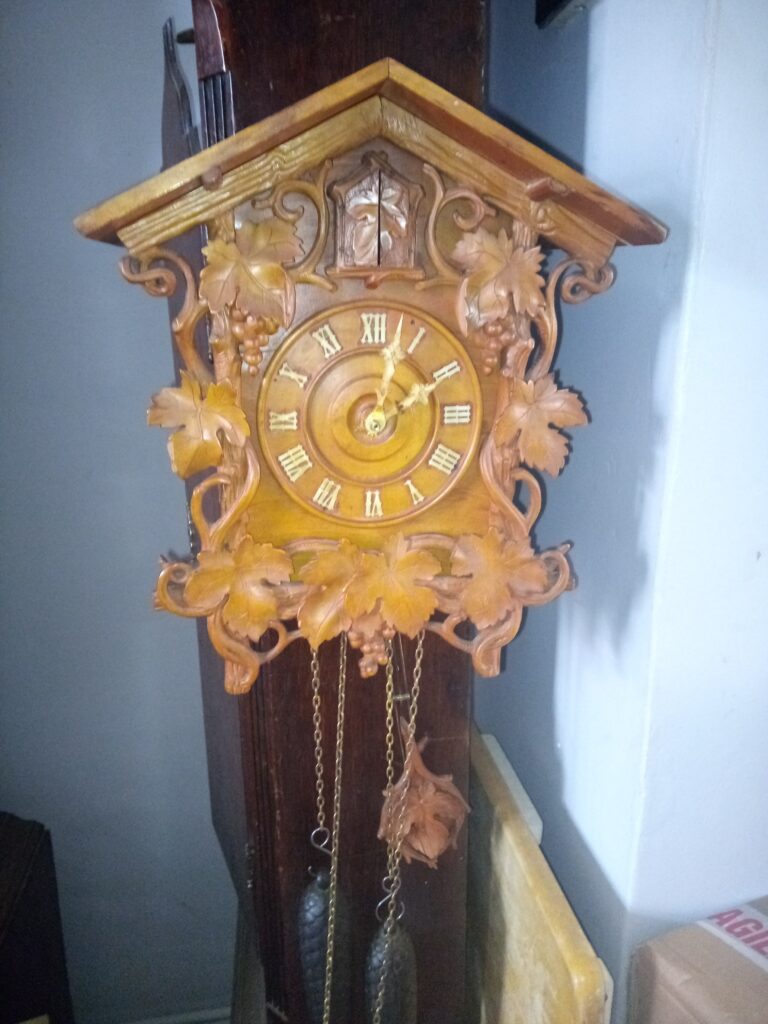
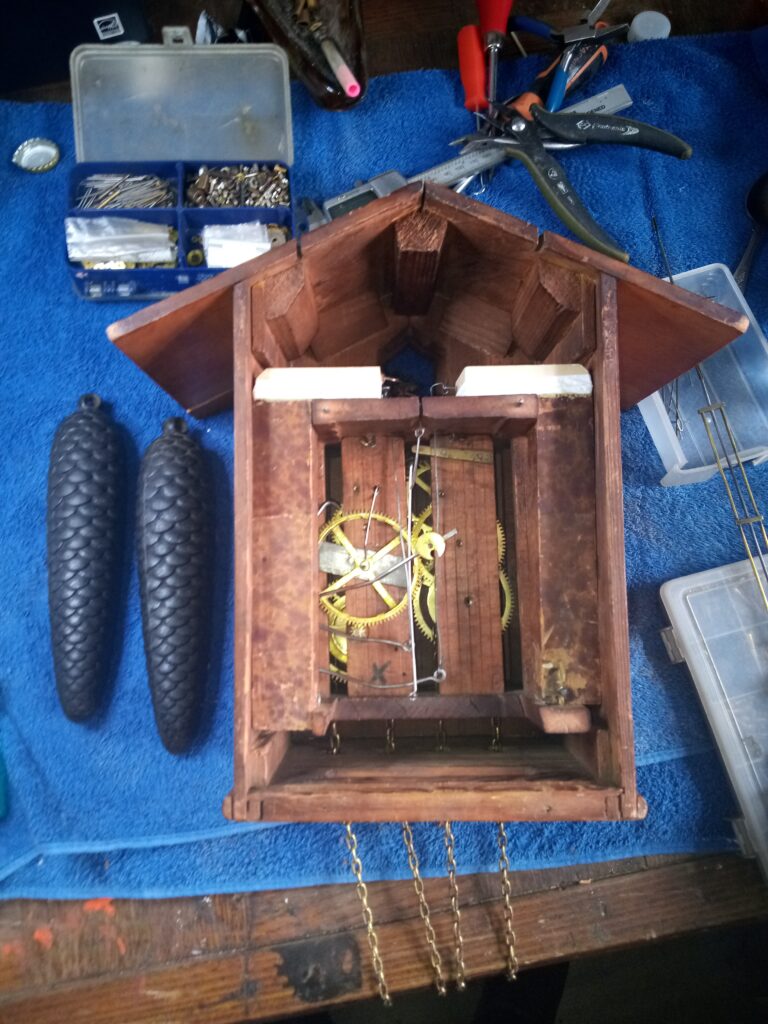

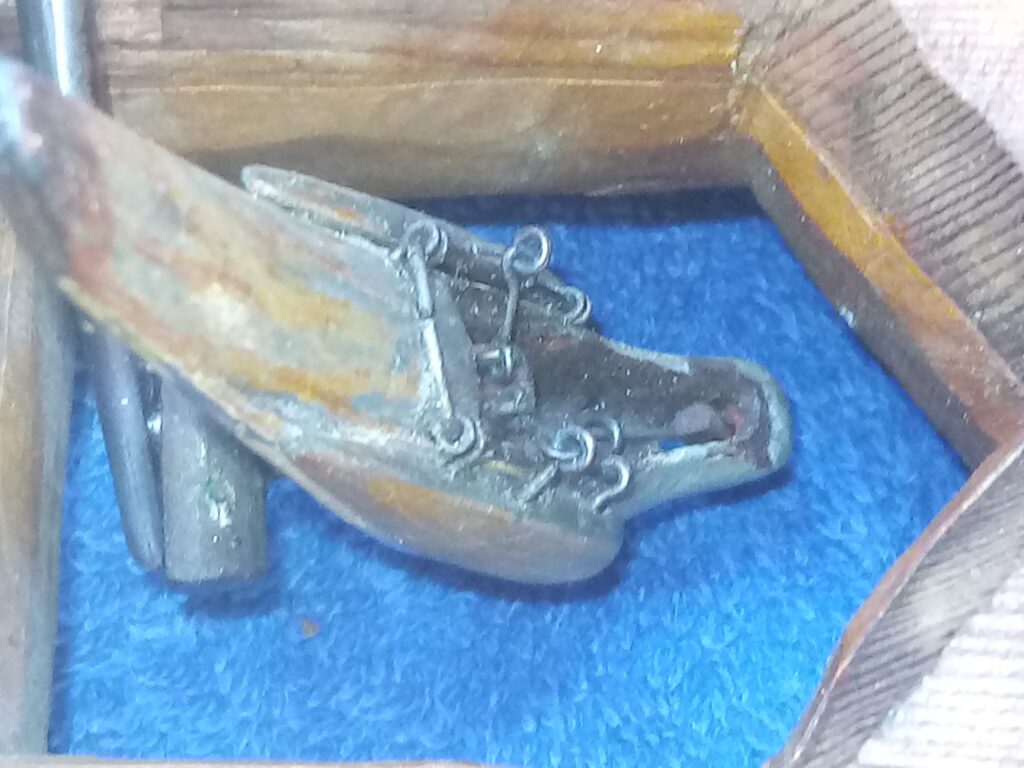





Recent Comments